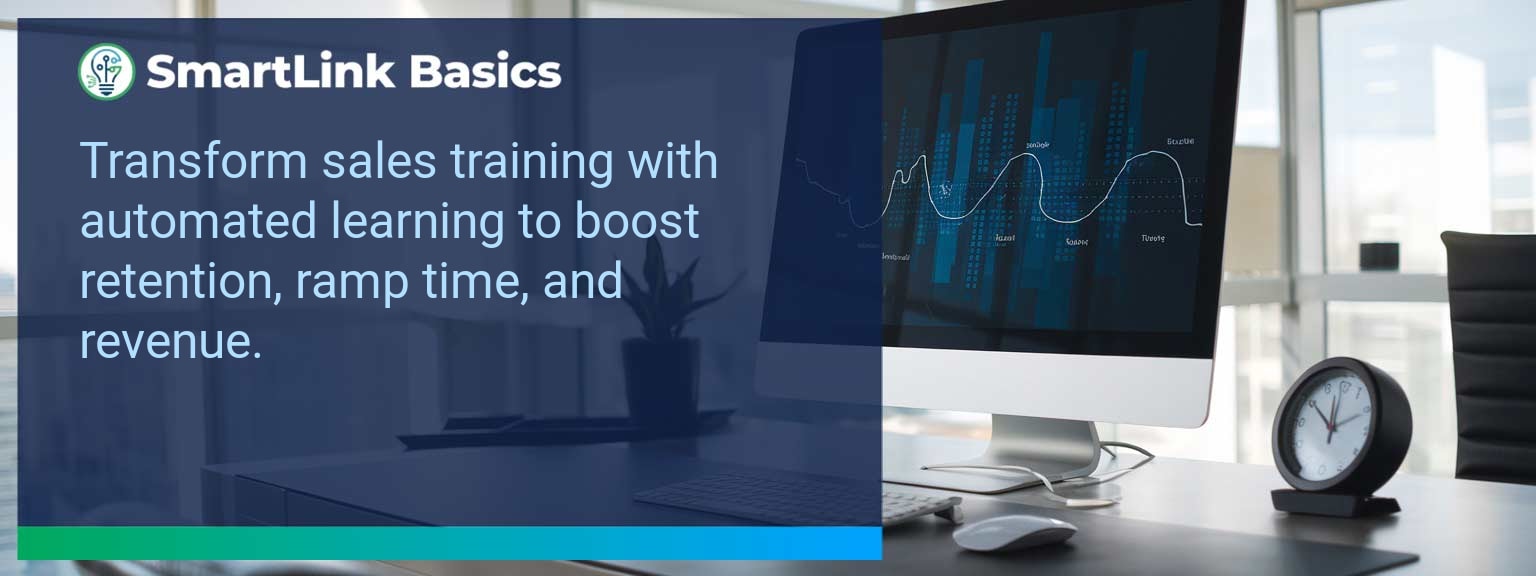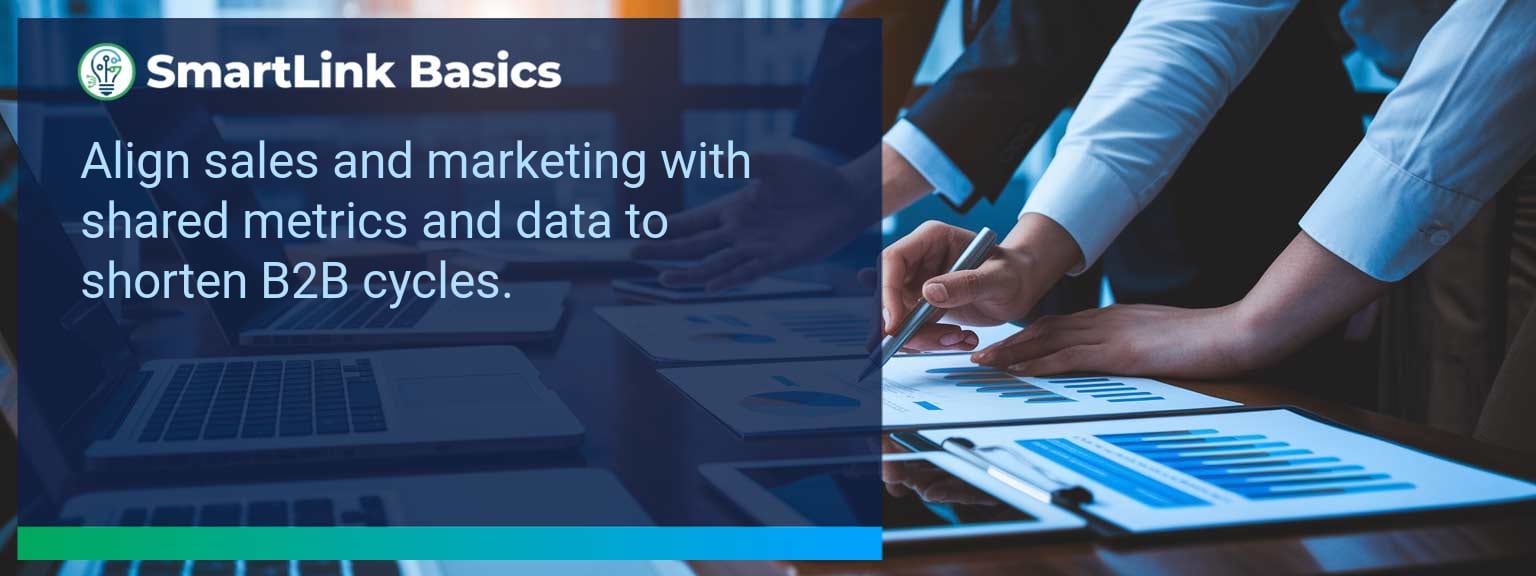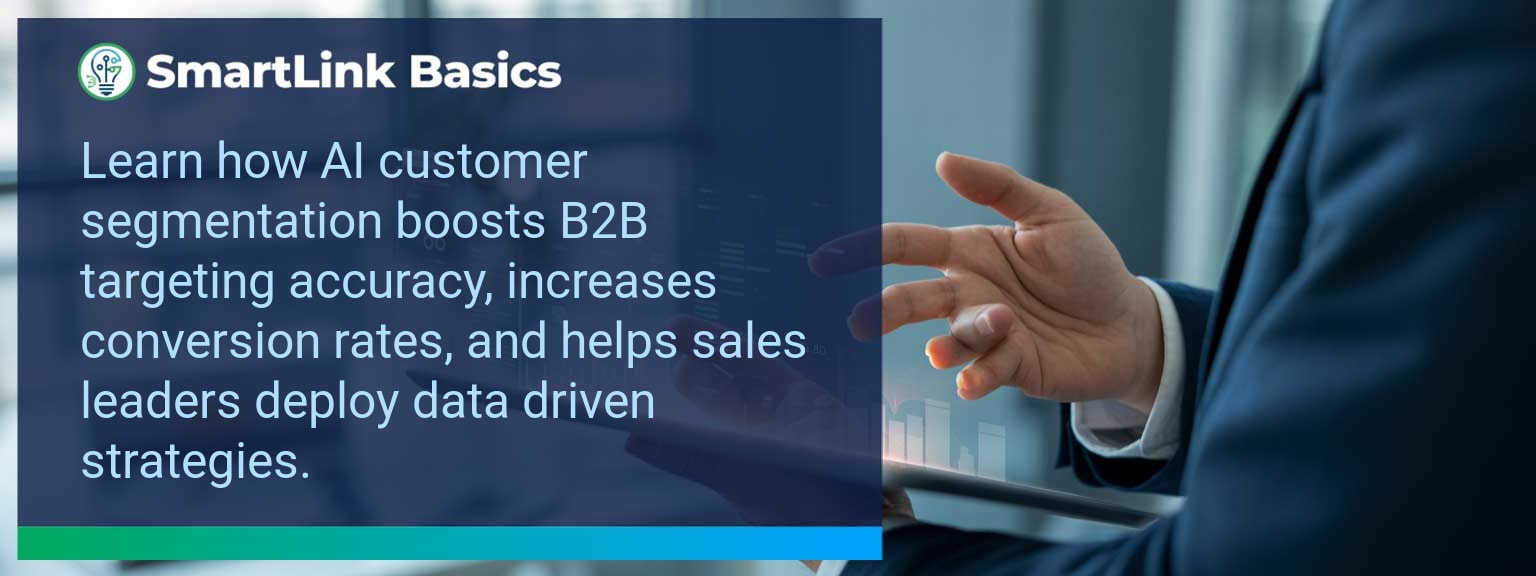Industry data shows that organizations adopting AI-driven automation achieve cost reductions of up to 30% while accelerating sales cycles by 20% or more (McKinsey, 2024). For sales leaders, AI automated workflows now define competitive advantage, enabling teams to reallocate time from repetitive tasks to high-value engagements. At SmartLink Basics, we help decision-makers implement these systems strategically, ensuring they integrate with existing revenue operations. In this article, you’ll see how AI automated workflows power business outcomes, the common obstacles that slow adoption, and practical steps to optimize processes. You’ll walk away with proven examples, a 90-day action blueprint, and measurable KPIs to track results.
- Automate repetitive administrative and CRM updates with AI.
- Integrate machine learning to personalize outreach at scale.
- Streamline approvals, quotes, and contract workflows for speed.
- Use predictive analytics to prioritize sales opportunities.
- Track adoption and performance with targeted metrics.
AI Automated Workflows: What Changed and Why It Matters
AI adoption has shifted from experimental to operational, making automated workflows a standard in high-performing sales organizations. The real advantage lies in combining workflow automation with artificial intelligence workflows to optimize every step of the revenue process. Sales leaders now use AI to synchronize touchpoints, reduce manual inputs, and ensure faster execution. For example, a B2B SaaS leader introduced automated lead enrichment and routing, cutting qualification time by 60%. Actionable insight: Audit processes for time-intensive handoffs and apply AI where repeatability is high.Redesign the Revenue Operating System With AI Automated Workflows
ICP, Segmentation, and Targeting AI-enabled segmentation uses historical wins, firmographic, and behavioral data to dynamically update ICP profiles. This ensures targeting precision without quarterly re-work. Pipeline Architecture Automated workflows push opportunities through the right stages based on engagement signals. AI flags at-risk deals for intervention. Plays and Messaging Integrated automation tools deliver personalized sequences based on buyer activity, increasing relevance at every touchpoint. Operating Cadence AI schedules follow-ups, forecast calls, and account reviews based on actual pipeline movement rather than static calendars. Actionable insight: Implement automation that adapts in real-time to both internal and buyer-driven events.Common Obstacles To Achieving Seamless Automation
The most frequent challenges are fragmented systems, inconsistent data quality, and cultural resistance. Without a unified data layer, automation amplifies errors rather than solving them. Coca-Cola Europacific Partners reported needing a full data governance upgrade before AI could improve sales workflows. Leaders must first assess infrastructure readiness and train teams to trust AI-influenced recommendations. Actionable insight: Before deployment, establish clean data practices and a single source of truth.Implementing AI To Optimize Workflows
Effective deployment of AI process optimization starts with mapping current-state processes, identifying friction points, and matching them with automation tools. For example, automating proposal generation based on CRM opportunity data can reduce turnaround from three days to one hour. Solutions combining business process automation platforms with machine learning integration enable continuous performance improvement. Actionable insight: Pilot in one high-impact stage, measure, and then expand.Tangible Benefits From Automated Processes
The benefits extend beyond time savings — sales leaders gain a scalable system. Tangible outcomes include faster quote-to-close, higher lead conversion, and better forecast accuracy. A manufacturing firm implemented AI-assisted order processing and cut errors by 40%, improving on-time delivery rates. Actionable insight: Track both speed and accuracy to measure workflow automation effectiveness.Metrics That Matter
| Category | Metric | Definition | Target |
|---|---|---|---|
| Leading | Workflow Completion Rate | % of automated sequences executed without manual intervention | 95%+ |
| Leading | AI Suggestion Adoption Rate | % of AI-generated action recommendations executed by reps | 80%+ |
| Lagging | Cycle Time Reduction | Decrease in time from lead entry to closed-won | 20%+ |
| Lagging | Revenue Per Rep | Average sales revenue generated per sales rep per quarter | +15% YoY |
| Quality | Automation Error Rate | % of workflows that trigger incorrect outcomes | <1% |
| Quality | Customer Satisfaction Post-Automation | Average CSAT score after automation implementation | ≥ 4.5/5 |
Innovations And Next Steps For AI Automation
Emerging capabilities like AI-generated playbooks, intent-driven dynamic routing, and integrated AR for virtual product demos are shaping the next wave of sales automation. Companies integrating these tools early will outpace competitors in speed and personalization. Actionable insight: Stay ahead by testing emerging automation features quarterly and aligning them with evolving buyer expectations.Get the 90-day plan, coaching rubric, and dashboard template to operationalize AI in your enablement program.
Turning AI Automation Into a Revenue Multiplier
AI automated workflows are now a strategic lever for predictable, scalable growth. This guide outlined current applications, adoption challenges, a 90-day execution plan, and measurable success criteria. To make automation pay off, sales leaders should integrate tools into one cohesive operating system and review results monthly for continuous improvement. Access more AI-driven sales enablement resources from SmartLink Basics to design a high-performance automation strategy. A well-defined and consistent leadership cadence separates high-performing sales teams from those stuck in cycles of unpredictable results. At SmartLink Basics, we see that without structured leadership in sales, even the most talented professionals stall when execution lacks rhythm and accountability. This topic is critical because markets reward disciplined, repeatable processes—not sporadic bursts of effort. In this article, we’ll examine why consistency in sales team leadership creates momentum, reduces operational friction, and amplifies results. You will learn how to implement a cadence that improves forecasts, strengthens coaching impact, and drives reliable performance across quarters. If you want measurable sales growth without relying on luck, these strategies will show you the path.- Establish a clear and consistent leadership cadence for all sales activities.
- Align goals, metrics, and actions through structured weekly and monthly rhythms.
- Use sales coaching frameworks to sustain performance improvements.
- Integrate performance management into daily operations for accountability.
- Continuously refine processes to adapt to market shifts without losing cadence.
What Changed and Why It Matters Now in Sales Leadership Strategies
The most successful sales organizations have shifted from sporadic leadership interventions to pre-planned, structured rhythms that drive execution. Competitive pressure and compressed sales cycles demand that leaders keep their teams aligned and engaged through a predictable operating structure. Without this, pipelines break down, coaching moments are missed, and win rates decline. For example, a SaaS company facing 40% rep turnover stabilized results by adopting fixed Monday pipeline reviews, midweek deal strategy calls, and monthly skills workshops. Actionable insight: Install a predictable schedule for your leadership touchpoints and tie every activity to a measurable objective.Redesign the Revenue Operating System with Sales Leadership Strategies
A robust leadership cadence is reinforced by the structure of your revenue operating system. This goes beyond meetings—it is about a designed framework that connects targeting, pipeline build, and execution pace. ICP, Segmentation, and Targeting Define the ideal customer profile with precision. Segment territories to balance opportunity potential and resource allocation. Leaders must revisit these criteria quarterly to stay relevant. Pipeline Architecture Model a healthy pipeline by ensuring a consistent ratio of top-of-funnel leads to late-stage opportunities. Regular cadence checks prevent stalls and enable early intervention. Plays and Messaging Establish core plays for outreach, discovery, and closing. Messaging must be documented and tested during leadership reviews to drive alignment. Operating Cadence Combine daily huddles, weekly tactical reviews, and monthly strategic sessions. Each has a unique purpose—from immediate course correction to long-term planning.Common Obstacles In Driving Sales Performance
Even with a clear cadence, execution can falter when leaders fail to address recurring bottlenecks. Common roadblocks include inconsistent coaching quality, misaligned KPIs, and reliance on outdated CRM data. A financial services firm, for example, experienced a 15% decrease in close rates due to misreported pipeline health. Only by enforcing strict reporting discipline within their cadence did they recover lost ground. Actionable insight: Audit your process quarterly and validate that every leadership touchpoint is supported by accurate, real-time data.Implementing Effective Leadership Practices
Transforming leadership cadence into measurable sales coaching requires deliberate design. Start by defining non-negotiable meetings, setting clear agendas, and holding leaders accountable for follow-through. Case in point: A B2B manufacturer cut their average sales cycle by 18% by introducing deal review checklists into weekly meetings. This reduced decision latency and improved close predictability. Actionable insight: Standardize the tools, scripts, and metrics that guide discussions, ensuring each session produces measurable actions.Measurable Improvements In Sales Outcomes
A predictable cadence translates into tangible results. Indicators of success include shorter sales cycles, improved win rates, consistent quota attainment, and scalable onboarding. Example: A tech reseller improved quarterly forecast accuracy from 62% to 88% within six months by aligning coaching, pipeline audits, and territory planning into one rhythm. Actionable insight: Track leading and lagging indicators to confirm your cadence impacts both immediate and long-term sales results.Metrics That Matter
| Category | Metric | Definition | Target |
|---|---|---|---|
| Leading | Pipeline Coverage Ratio | Value of pipeline compared to quota | 3x quota |
| Lagging | Win Rate | Percentage of closed deals won | >35% |
| Quality | Coaching Session Completion | Percentage of scheduled sessions held | >90% |
Get the 90-day plan, coaching rubric, and dashboard template to operationalize AI in your enablement program.









